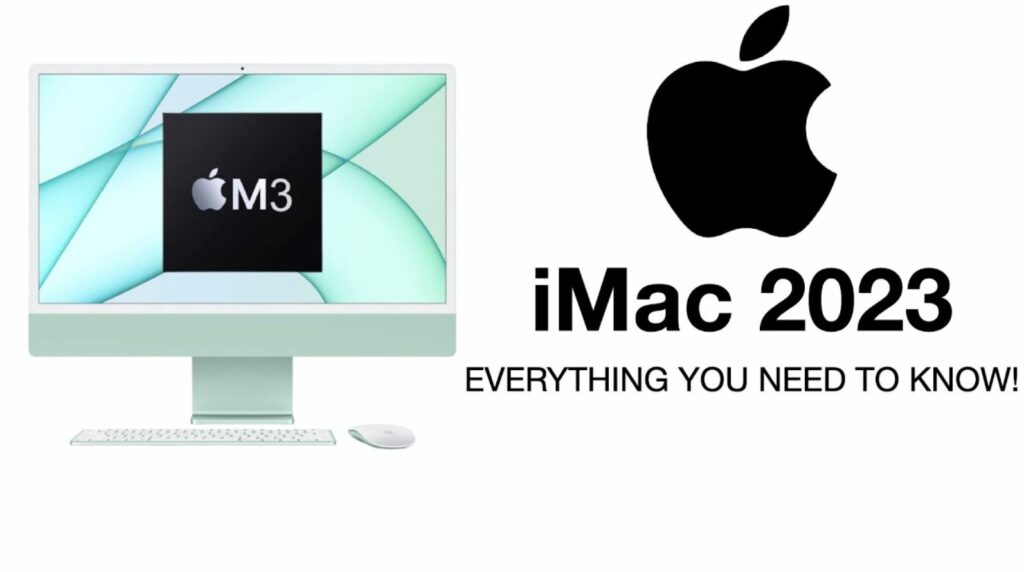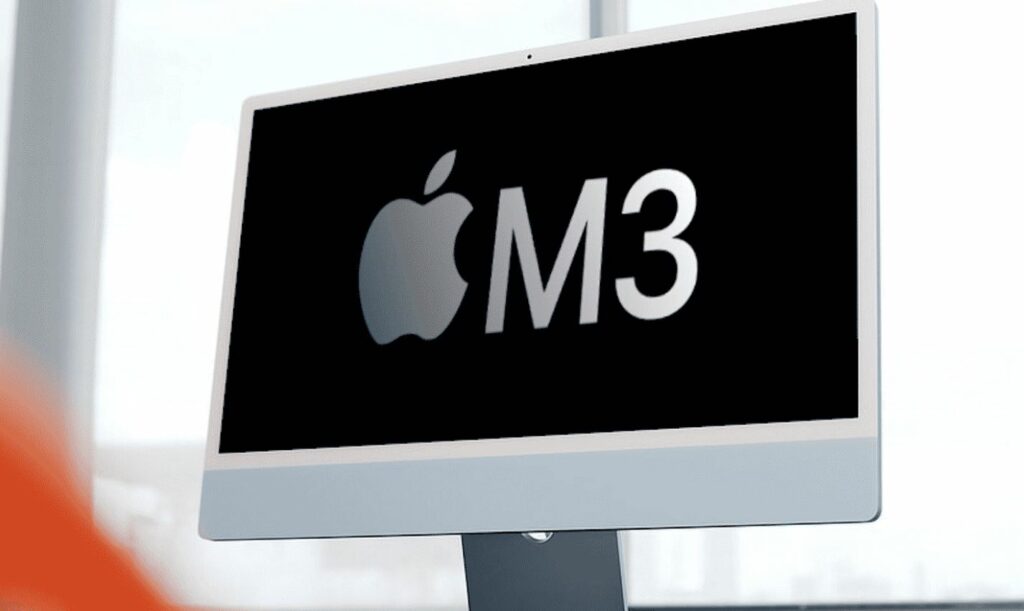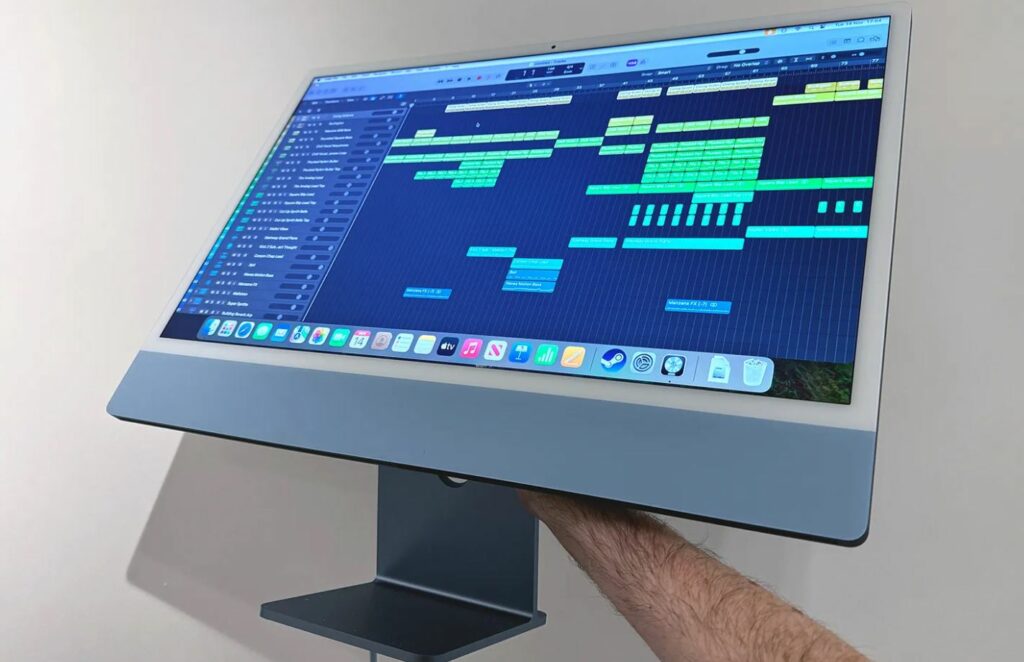In terms of look and, quite honestly, the majority of its functions, the Apple iMac M3 2023 is the same as the 2021 model. This is amazing since it has a beautiful 24-inch high-resolution display, a superb overall design, and comes in up to seven colors with matching accessories. The big difference is what’s powering its performance: Apple’s M3 silicon. It’s quite a change, too.

The M-series CPUs from Apple, which put an end to Intel inside, are found in the second generation of iMacs released this year. The 2021 model was equipped with an M1, and Apple skipped past its M2 chips in favor of the new M3 hardware that was unveiled with the upgraded 14- and 16-inch MacBook Pro laptops in this iMac. The performance is unquestionably outstanding in every way.
iMac M3 2023 Specifications
| Price as reviewed | $2,299 |
|---|---|
| Display | 24-inch 4,480×2,520-resolution Retina |
| Processor | M3 8-core (4P, 4E) |
| Graphics | M3 10-core |
| Memory | 24GB |
| Storage | 1TB SSD |
| Wireless | Wi-Fi 6E (802.11ax), Bluetooth 5.3 |
| Connections | USB-C Thunderbolt/USB 4 (x2), USB-C 3.0 (x2), 3.5 mm headphone jack, Gigabit Ethernet (on power supply) |
| Operating system | macOS Sonoma |
At $1,299 (£1,399, AU$2,199), the entry-level M3 iMac offers an eight-core CPU and eight-core GPU, 8GB of unified memory, and a 256GB SSD for storage. The $2,299 model that I tested has a 10-core GPU, 24GB of RAM at maximum capacity (compared to 16GB on the M1 iMacs), and greater storage.
For the iMac, Apple now offers three configuration starting points, and it’s not too difficult to figure out how they differ. All you’re getting with the third option is an increase in storage from 256GB to 512 GB. There are only two versions: the base model, which costs $1,299, and the step-up model, which costs $1,499; both may be customized with more memory and storage as well as extra accessories. Still, there are enough differences to justify spending the extra $200.

Along with the contents of the $1,299 base model, the $1,499 model comes with the following extras:
- M3 processor with ten GPU cores and eight CPU cores
- In addition to its two Thunderbolt USB-C connectors, it has two USB-C 3.0 ports.
- The power supply has Gigabit Ethernet and the Magic Keyboard with Touch ID
You may select from three other colors—yellow, orange, and purple—as well as a 2TB SSD if you choose the $1,499 edition. For a total of $80, the Ethernet power adapter and Touch ID keyboard may be readily added to the base model. If you can afford it, the extra $120 is well worth it to obtain the additional USB-C connections and better GPU performance. However, it’s a little annoying that a 256GB SSD and 8GB of RAM are still the only things you can have for $1,499. For daily use, 8GB of RAM should be plenty for most individuals. If you plan to create content, play games, or are just a big multitasker, add $200 more for 16GB of memory or $400 more for 24GB.
Performance Is What Matters The Most
Undoubtedly, the performance of the M1 and Intel-based iMacs has significantly improved. Simple daily duties won’t be a problem, and even if you choose to get the $1,299 M3 iMac, I assume you’d be more than capable of standard office and schoolwork. Spending more on the $1,499 model makes sense if you’re upgrading an old iMac or other all-in-one, according to the findings of my preliminary testing and benchmarking. For instance, the $4,500 27-inch iMac with a 10th-generation Intel Core i9 that we tested in 2020 was easily defeated by the M3 iMac in the multi-core test on Geekbench 5. It also easily defeated the M1 by more than 3,000 points. (You are free to run Geekbench, 3DMark, and Cinebench on your present system for personal use.)

Upon launching the iMac, Apple made much of the gaming experience. Having played Disney Dreamlight Valley and Baldur’s Gate 3, I can see how this iMac may be a good alternative for relaxing with some games. But once more, if this is something you want to do, you should get a system with at least 16GB of unified memory. Moreover, cloud gaming services such as GeForce Now are available to you. You will undoubtedly have a more immersive experience thanks to the stunning 24-inch display and superb audio quality from its six speakers. Additionally, one of the Thunderbolt 3 connections can support a monitor up to 6K at 60Hz if you need an extra display.
The M3 iMac’s media engine offers hardware acceleration for ProRes and ProRes Raw in addition to H.264 and HEVC, which is a feature worth considering if you want to use it for content creation.
iMac M3 vs iMac M1 vs iMac Intel i9
| iMac M3 | iMac M1 | iMac Intel i9 | |
| Geekbench 5, Multicore | 10,697 | 7,572 | 10,140 |
| Cinebench R23, Multicore | 9,473 | 7,748 | NA |
| 3DMark Wild Life Extreme | 8,269 | 4,916 | NA |
| Geekbench 6, Multicore | 11,999 | NA | NA |
| Cinebench R24, Multicore | 651 | NA | NA |
| Cinebench R24, GPU | 3,728 | NA | NA |
Read | Nvidia GeForce RTX 40 Super Series Leaked: Every Update
iMac specs comparison
| iMac M3 (2023) | Apple macOS Sonoma; Apple M3 (8-core CPU, 10-core GPU); 24GB unified memory; 1TB SSD |
|---|---|
| iMac M1 (2021) | Apple macOS Ventura; Apple M1 (8-core CPU, 8-core GPU); 16GB unified memory; 512GB SSD |
| iMac Intel (2020) | Apple macOS Catalina; 3.6GHz Intel Core i9-10910; 32GB DDR4 2,667MHz RAM; 16GB AMD Radeon Pro 5700 XT; 1TB Flash Storage |
Design of iMac M3 2023: True Definition of Elegance
The iMac M3 2023, like the 2021 M1 model, is remarkably thin and small, weighing less than ten pounds. Up to seven two-tone colors are available, with a lighter shade used for the stand, the huge Apple logo on the rear, and the area beneath the display. Other than that, the back is a darker shade than the rest.
The full-HD webcam and integrated microphones are carryovers from the M1 iMac. You won’t feel awkward during FaceTime chats or Zoom meetings thanks to the effective combination, at least not due to the poor image and audio quality. But as nothing has changed in this area, Face ID is likewise absent.
The power cable is one of my favorite aspects of the current design, despite its ridiculous name. There is no problem in connecting it because it simply clicks into place magnetically and doesn’t require precise alignment. It also clings firmly. This iMac is lightweight and extremely thin, making it effortless to transport around your house. It is even simpler when the power cord can be disconnected and reattached.

It has just one headphone jack, two USB-C ports, and an Ethernet jack that requires a more expensive power source, so you’ll need a dock or dongles for additional connections. An SD card port would be wonderful to include the next time Apple improves the design, to make it easier to use the iMac’s greater graphics capabilities for editing photos and videos. While I’m at it, I would also want to see an option to add a stand that is height- and tilt-adjustable, a la Apple’s Studio Display, but without having to pay an additional $2,000 for it. As of right now, the iMac M3 2023 comes with an integrated VESA mount for an external stand or arm.
Verdict
Overall, I think the latest iMac design—both its size and appearance—is very great. The next time, I hope Apple will include an SD card port, much like it did with the MacBook Pro. An option for a height-adjustable stand would be good as well. Those are minor in comparison to the remainder of the bundle, though.
The M3’s performance is a major plus for all jobs, including creating content and doing simple home office and schoolwork. Just be sure to carefully consider how you will use it going forward and how it may differ from how you do it now. The 24-inch iMac seems especially well-suited as a family computer or if you want something other than a laptop to easily move from room to room. It’s large enough to stretch out your work, relax and stream a movie, or do some light gaming, but still compact enough to fit into confined areas like a kitchen nook.